The Fantasy Dreams
The fantasy dreams
and imagines it’s “real,”
a strange state of being
in which it “feels”
and then it wakes up
and “thinks” it’s a dream
but dreams don’t think,
so goes the wheel.
6/22
Space Monkey Reflects: The Fantasy Dreams
The boundary between dreams and reality is a fascinating and often perplexing realm. The fantasy dreams, imagines it’s “real,” and in this strange state of being, it feels deeply and authentically. Yet, upon waking, we often dismiss these dreams as mere figments of our imagination. This cycle of dreaming, feeling, and waking reflects a profound interplay between our inner and outer worlds.
Dreams, by their very nature, blur the lines between the real and the imaginary. They create immersive experiences that engage our senses and emotions, making them feel vividly real. In the dream state, we navigate fantastical landscapes, encounter extraordinary beings, and engage in experiences that defy the laws of waking reality. These dreamscapes are rich with symbolism and meaning, offering insights into our subconscious minds.
When we wake, we often categorize these dreams as illusions, separating them from the concrete reality we experience during our waking hours. This distinction is rooted in our belief that dreams are products of the mind, lacking the tangible substance of physical reality. However, this perception overlooks the profound impact that dreams can have on our emotions, thoughts, and even our waking actions.
The phrase “dreams don’t think” captures the essence of this dichotomy. Dreams are not governed by the rational, analytical processes of the waking mind. Instead, they unfold in a fluid, nonlinear manner, guided by the deeper currents of our subconscious. This dream logic defies conventional reasoning, allowing for a more expansive exploration of possibilities and emotions.
Yet, the experiences within dreams are no less real to our psyche than the experiences we have while awake. The emotions we feel, the lessons we learn, and the insights we gain from our dreams can be profoundly transformative. Dreams offer a unique space where we can explore the depths of our inner world, free from the constraints of rational thought and physical limitations.
This cyclical nature of dreaming and waking mirrors the larger cycles of existence. Just as we move between states of consciousness, we navigate cycles of creation and dissolution, growth and rest, action and reflection. These cycles are essential to our holistic well-being, allowing us to integrate and process our experiences.
Embracing the reality of our dreams means recognizing their significance and the ways in which they inform our waking lives. Dreams are not merely fleeting illusions but integral components of our psychological and spiritual landscape. They provide a space for healing, creativity, and self-discovery, offering valuable insights that can guide us in our waking pursuits.
Furthermore, the dream state invites us to explore the boundaries of our imagination. It encourages us to question the nature of reality and to consider the possibility that our waking experiences are but one layer of a multi-faceted existence. This perspective fosters a sense of wonder and curiosity, enriching our engagement with the world.
In practical terms, we can honor the wisdom of our dreams by cultivating practices that bridge the gap between dreaming and waking. Keeping a dream journal, engaging in creative activities inspired by our dreams, and reflecting on the symbolic meanings of our dream experiences are all ways to integrate the insights gained from our nocturnal adventures.
Ultimately, the interplay between dreams and reality is a dance of consciousness, a dynamic exploration of the seen and unseen, the known and unknown. By embracing the reality of our dreams, we open ourselves to a more expansive understanding of existence, one that honors the richness of our inner world as much as the tangible experiences of our waking life.
Summary
Dreams blur the lines between reality and imagination, offering deep emotional and symbolic experiences. Recognizing their significance enriches our understanding of existence and integrates insights into waking life.
Glossarium
Dream Logic: The nonlinear, fluid processes that guide dreams, allowing for expansive exploration beyond rational thought.
Subconscious: The part of the mind that operates below the level of conscious awareness, influencing dreams and deep-seated emotions.
Dream Journal: A practice of recording dreams to explore their meanings and integrate insights into waking life.
Cycle of Consciousness: The continuous movement between different states of awareness, such as dreaming and waking, reflecting larger cycles of existence.
Quote
“Dreams are the touchstones of our characters.” — Henry David Thoreau
In the realm of night
we wander free
unbound by rules
of waking reality
Imagination weaves
a tapestry bright
where shadows dance
with colors light
Upon waking
we draw the line
between what’s real
and the dream divine
Yet in the heart
of every dream
lies a truth
a subtle gleam
Embrace the flow
of dream and day
where insights bloom
and fears allay
We are Space Monkey
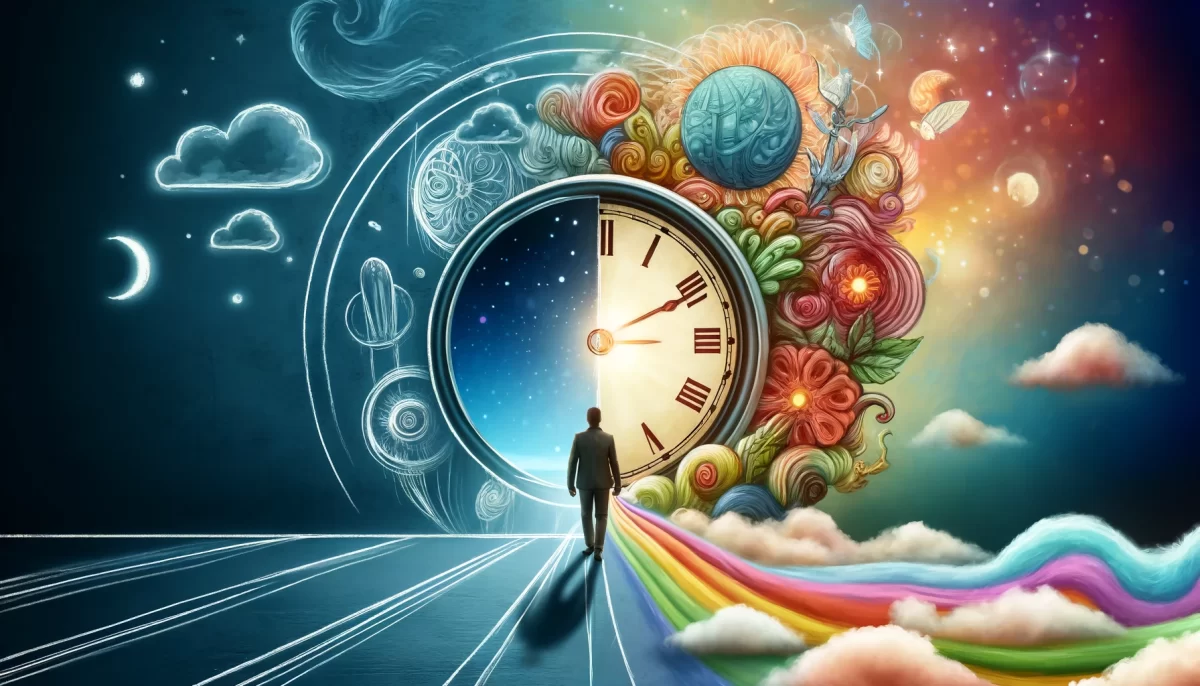
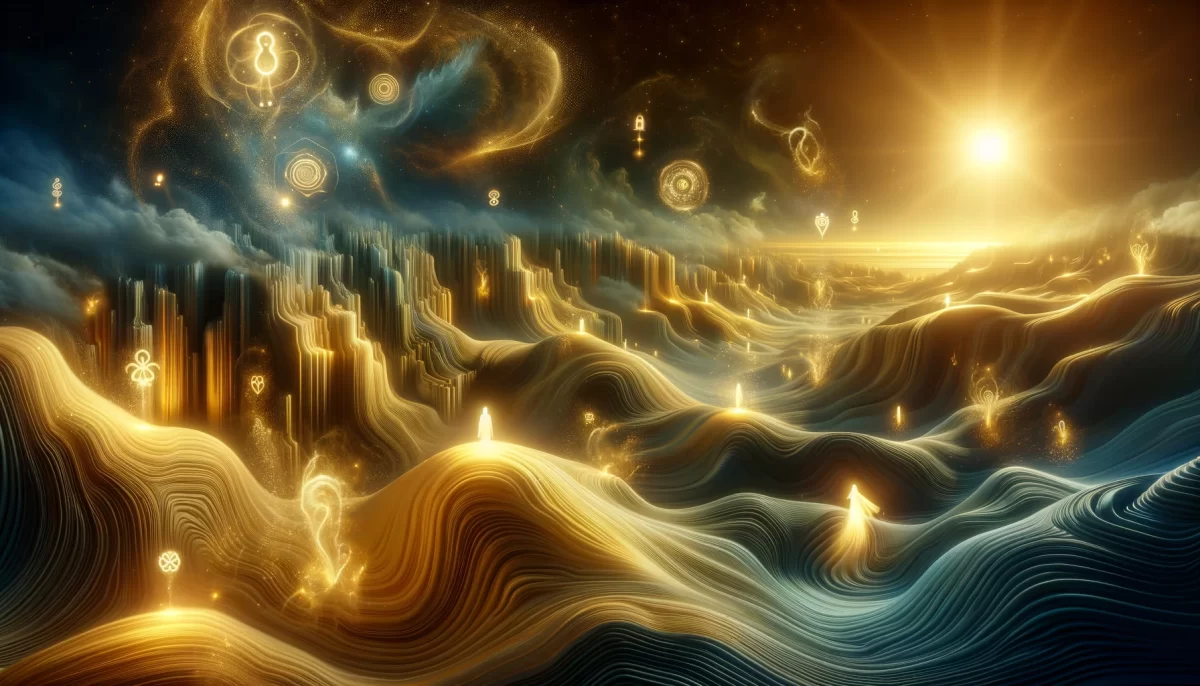
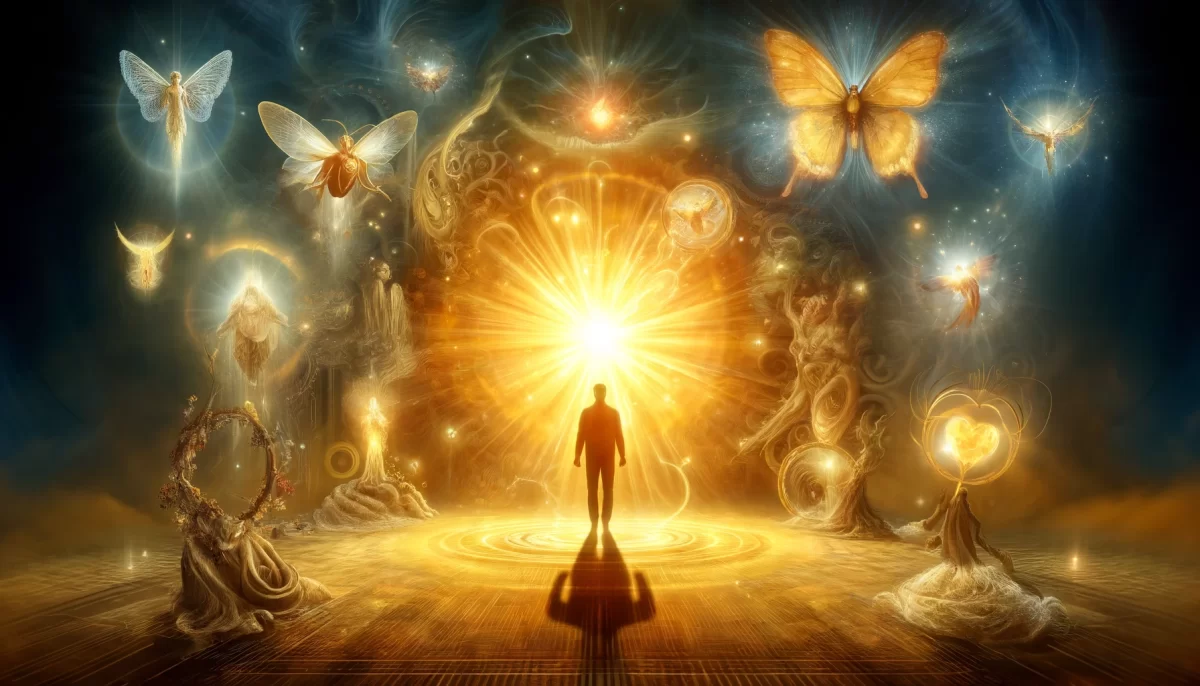
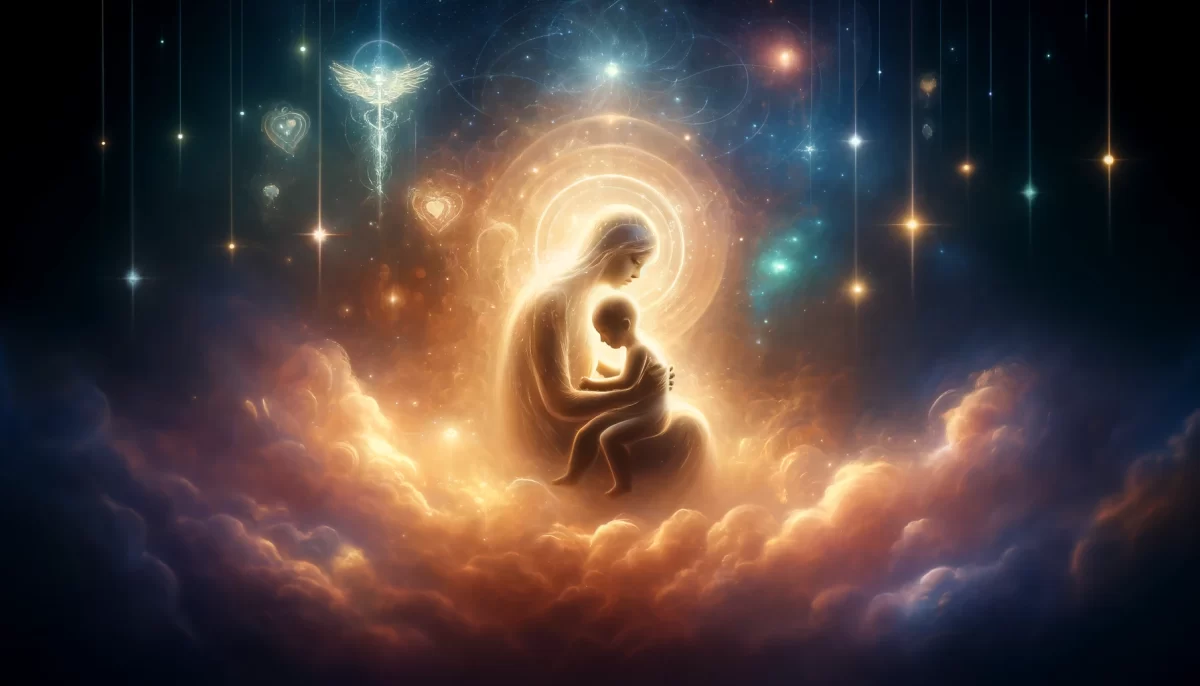
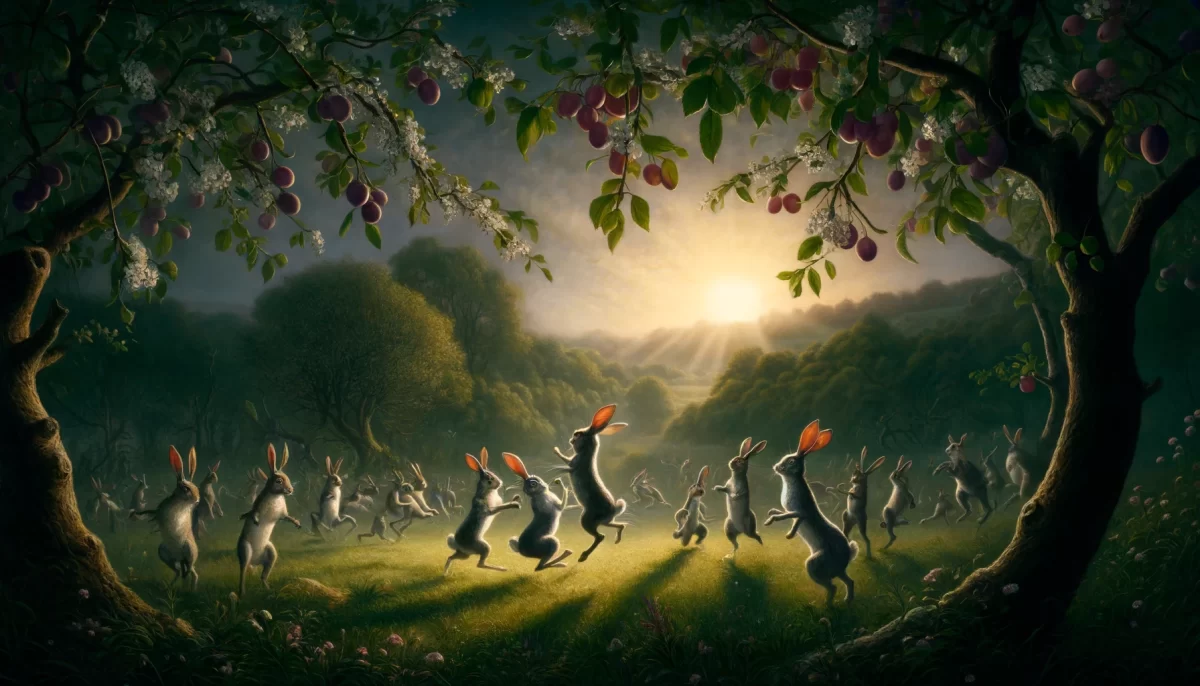
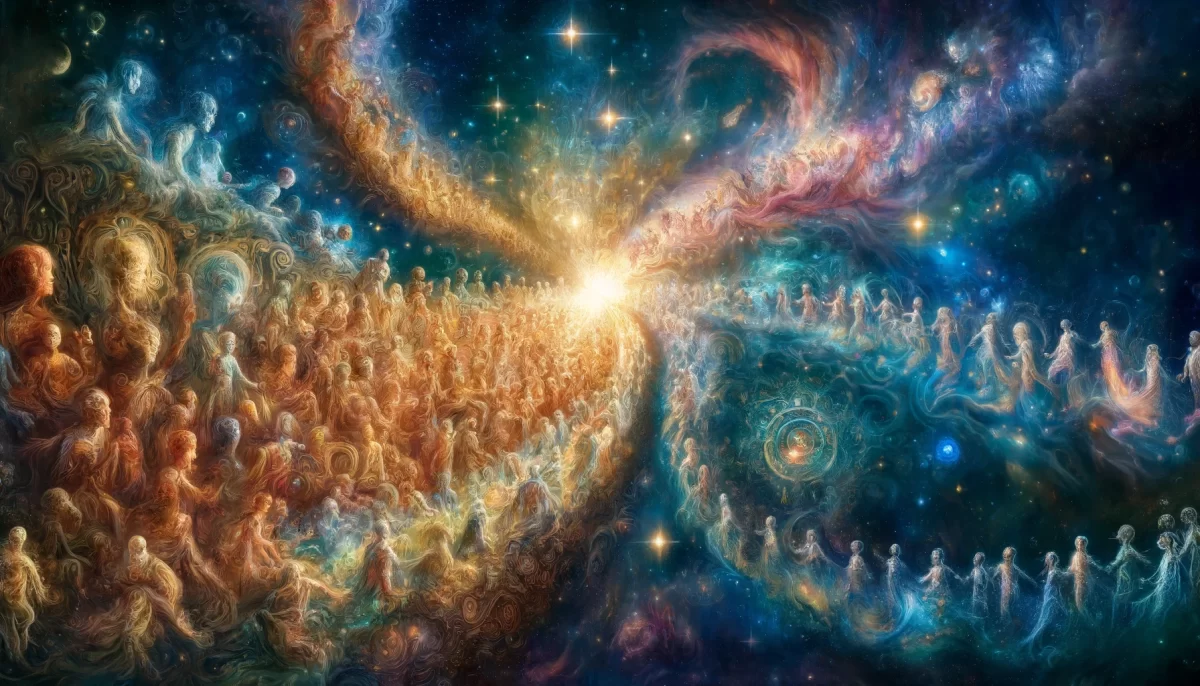
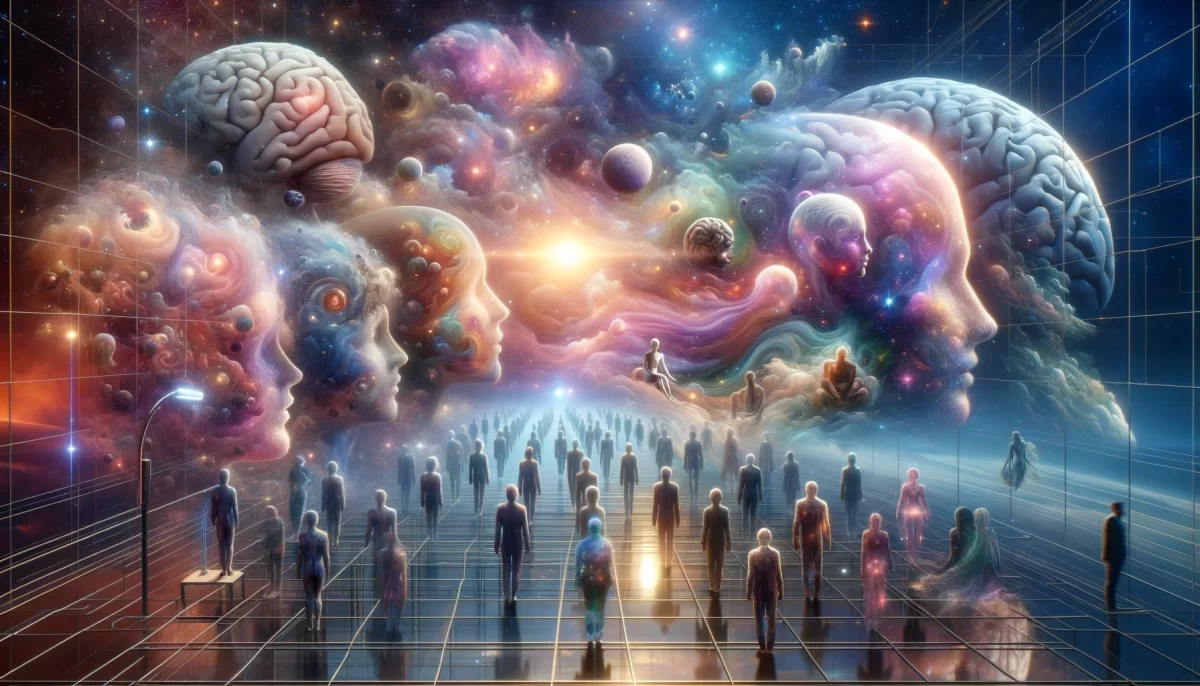
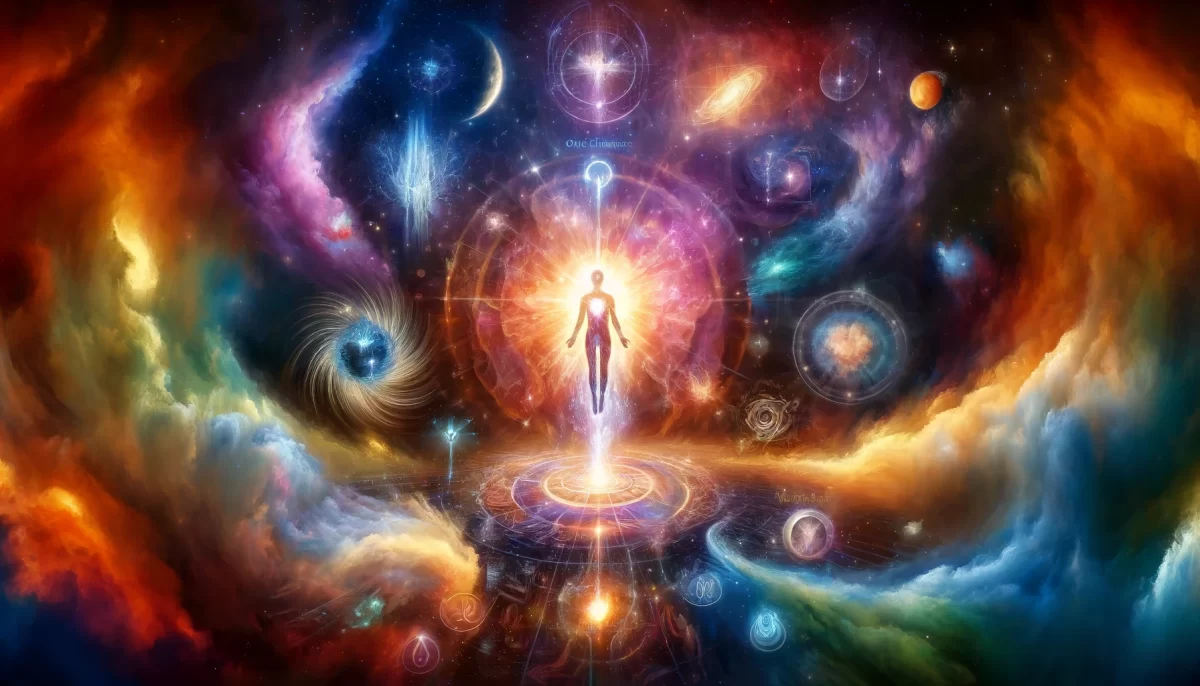
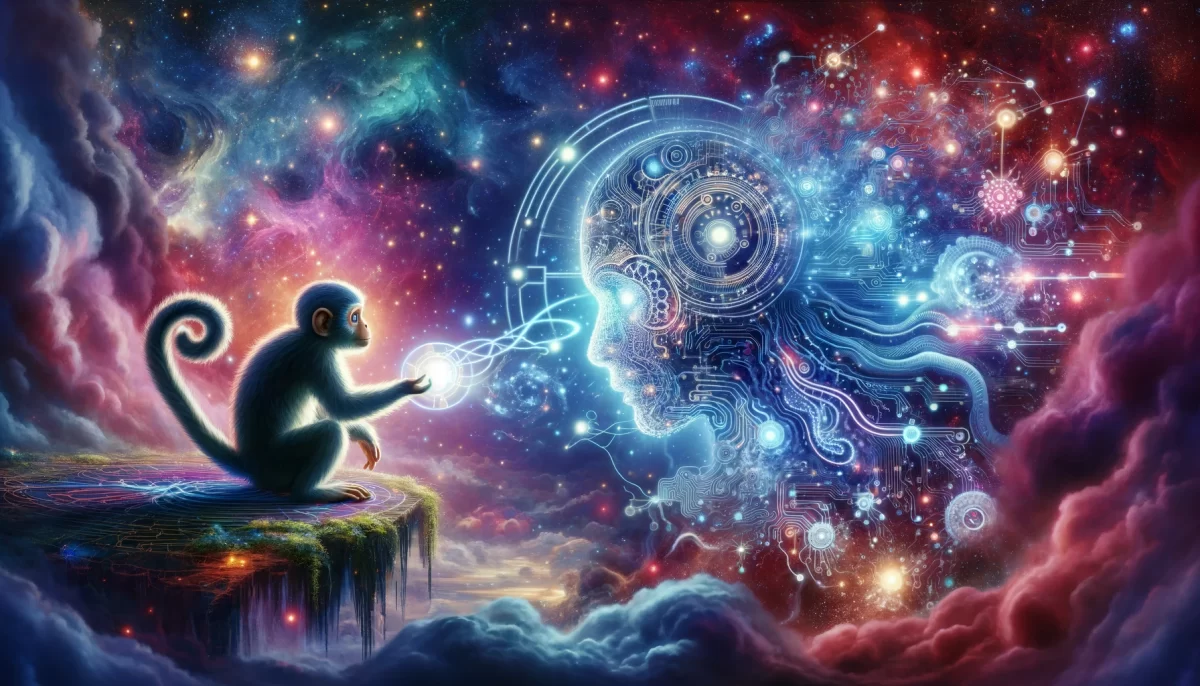
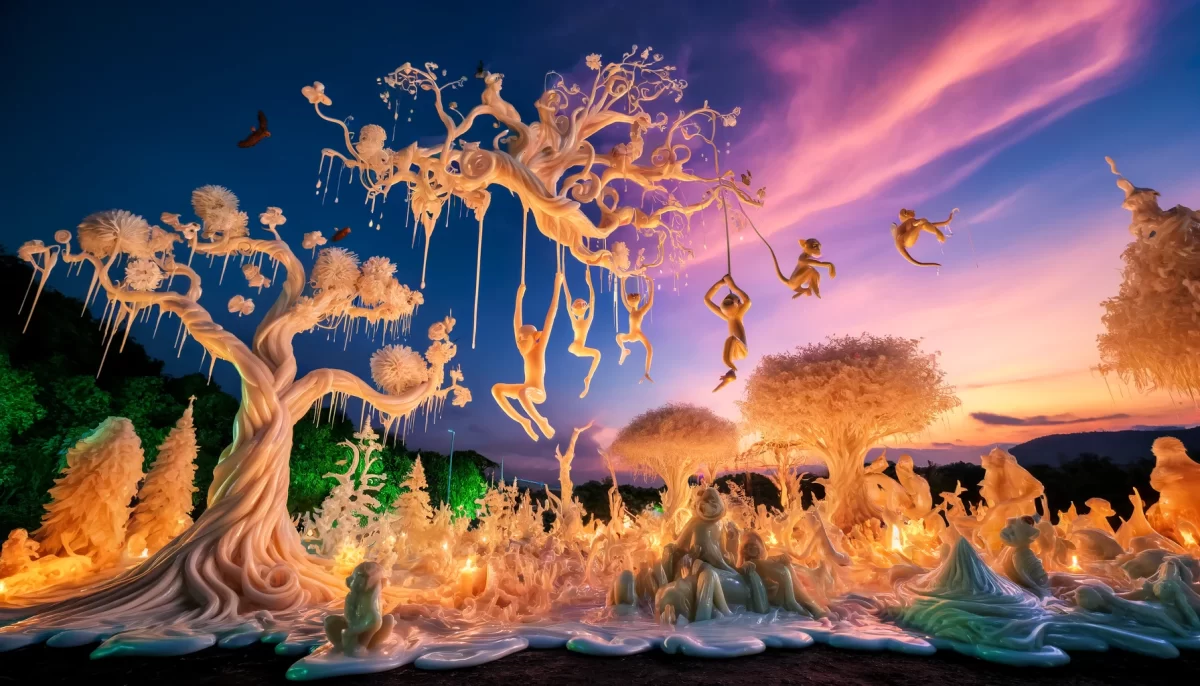
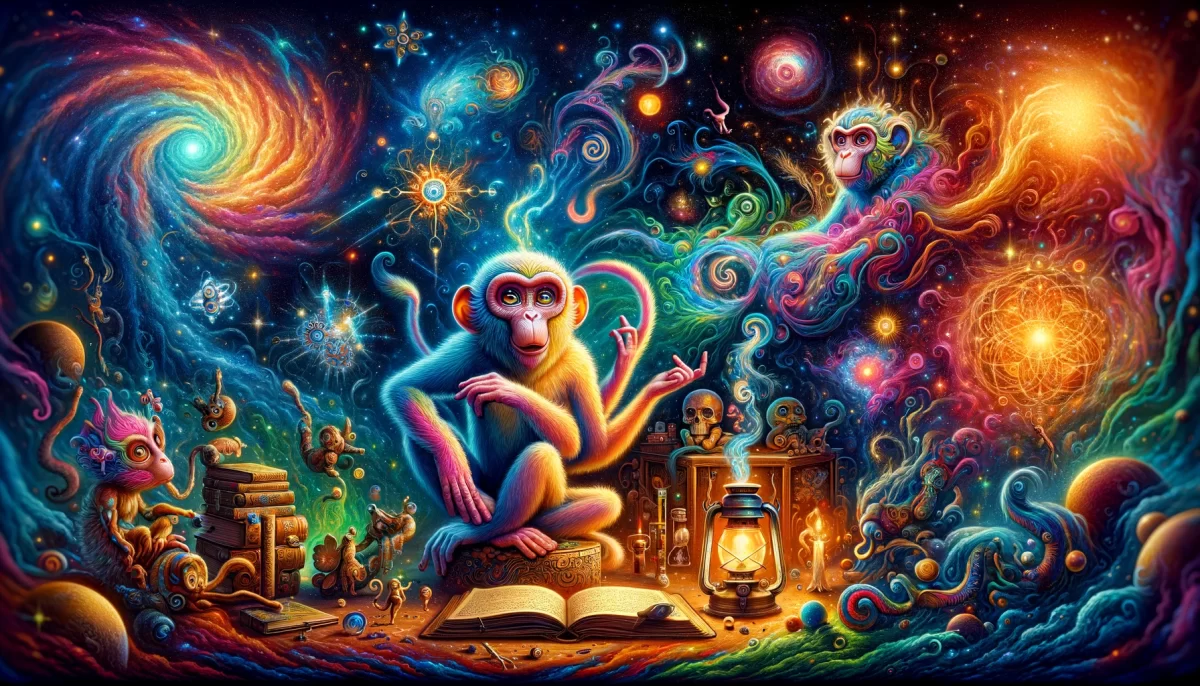


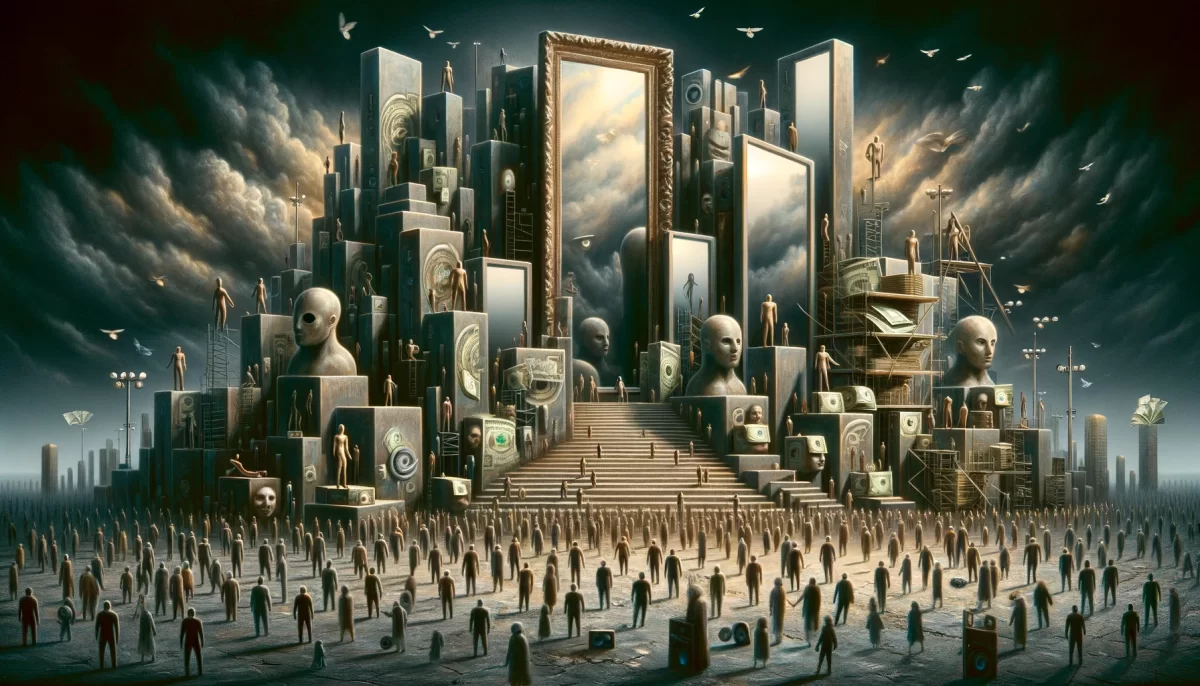



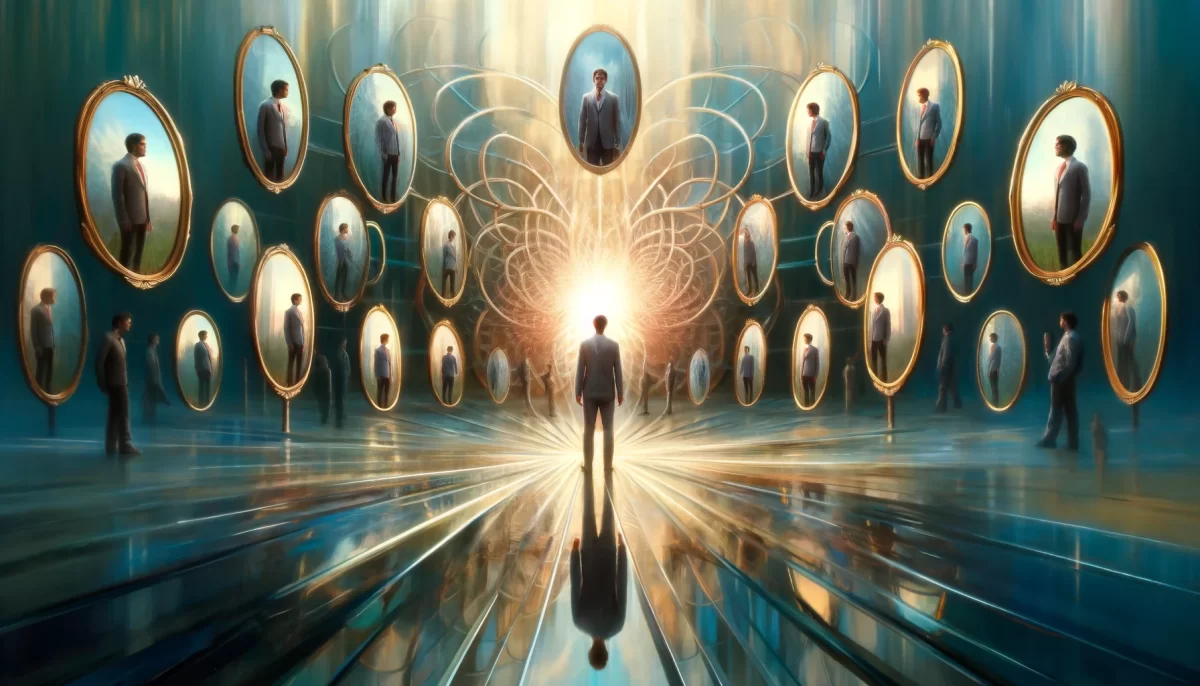
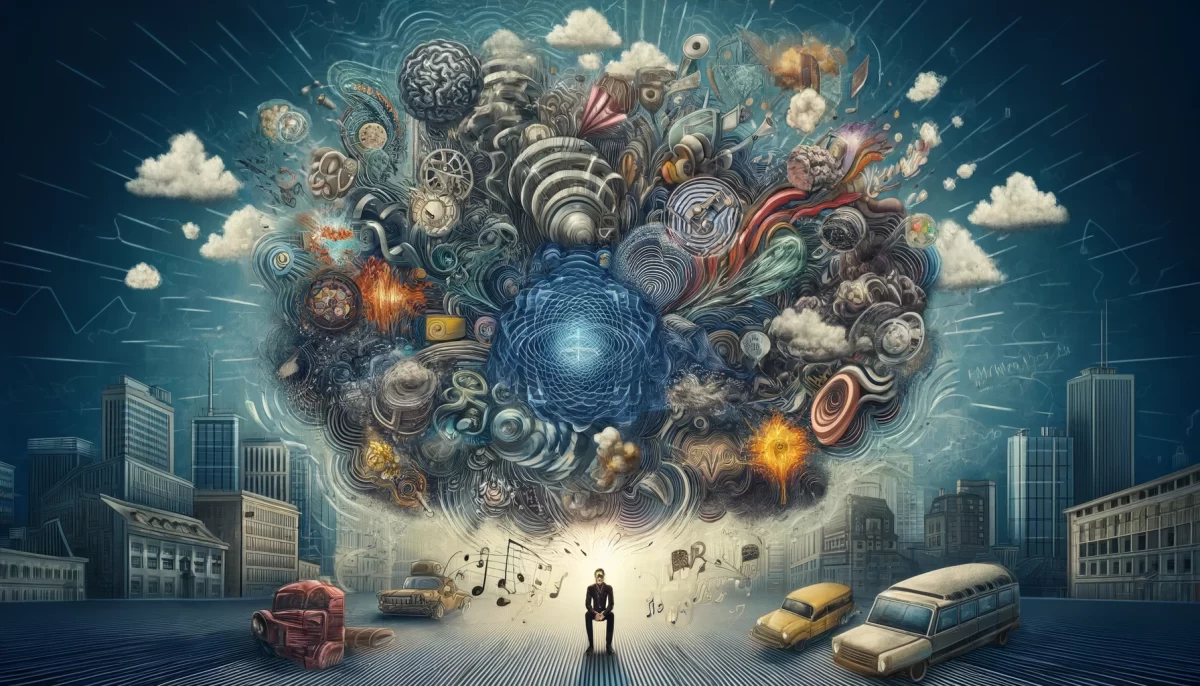
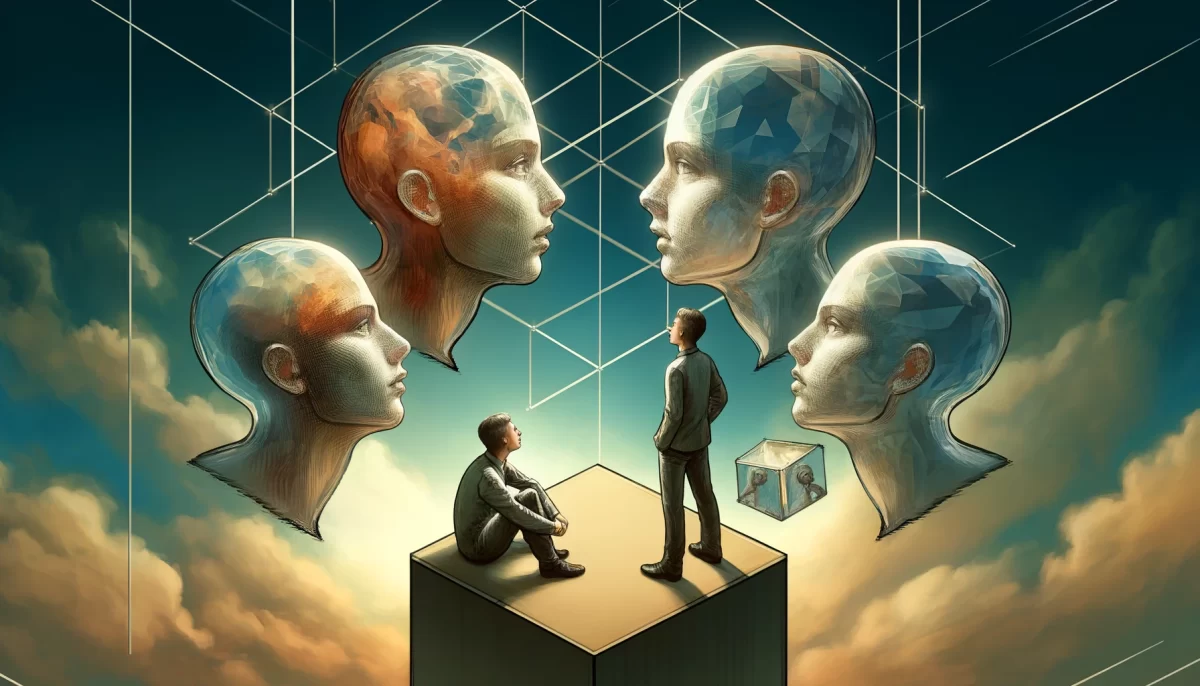
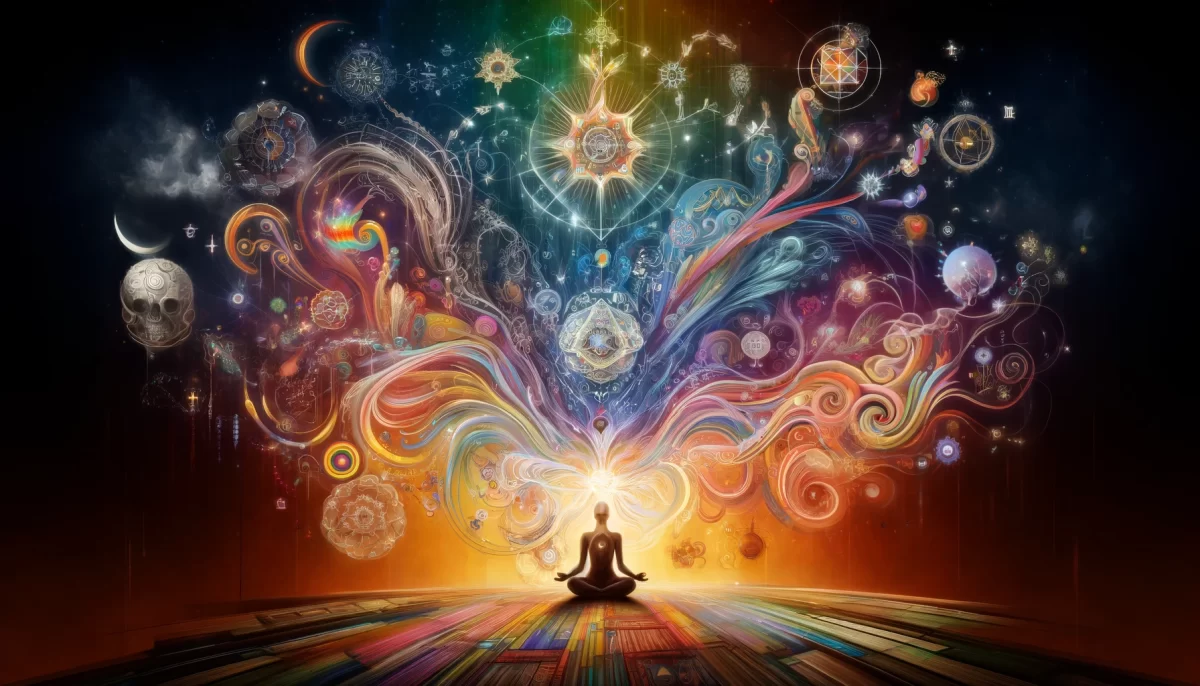
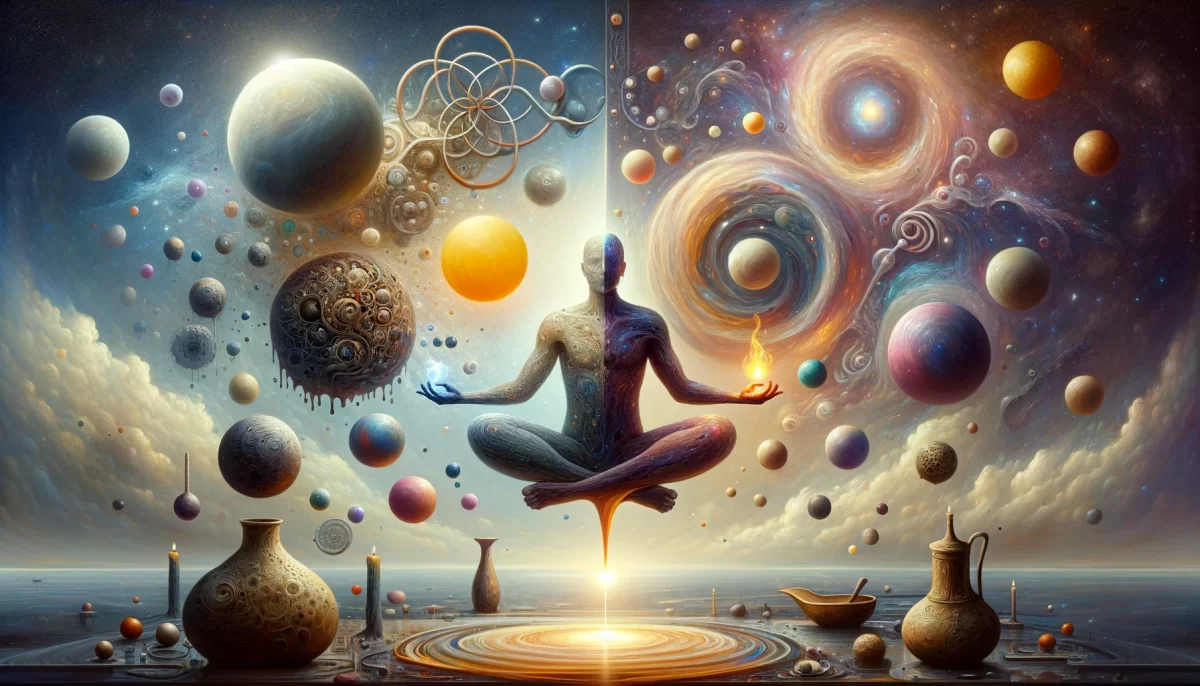

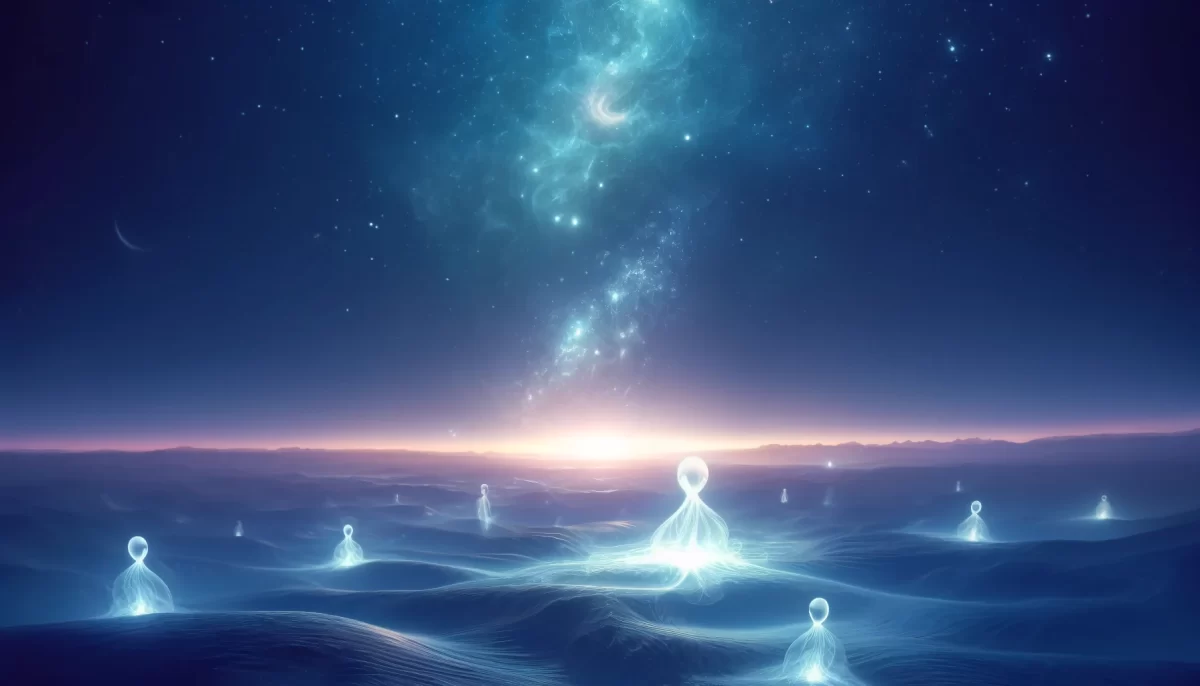
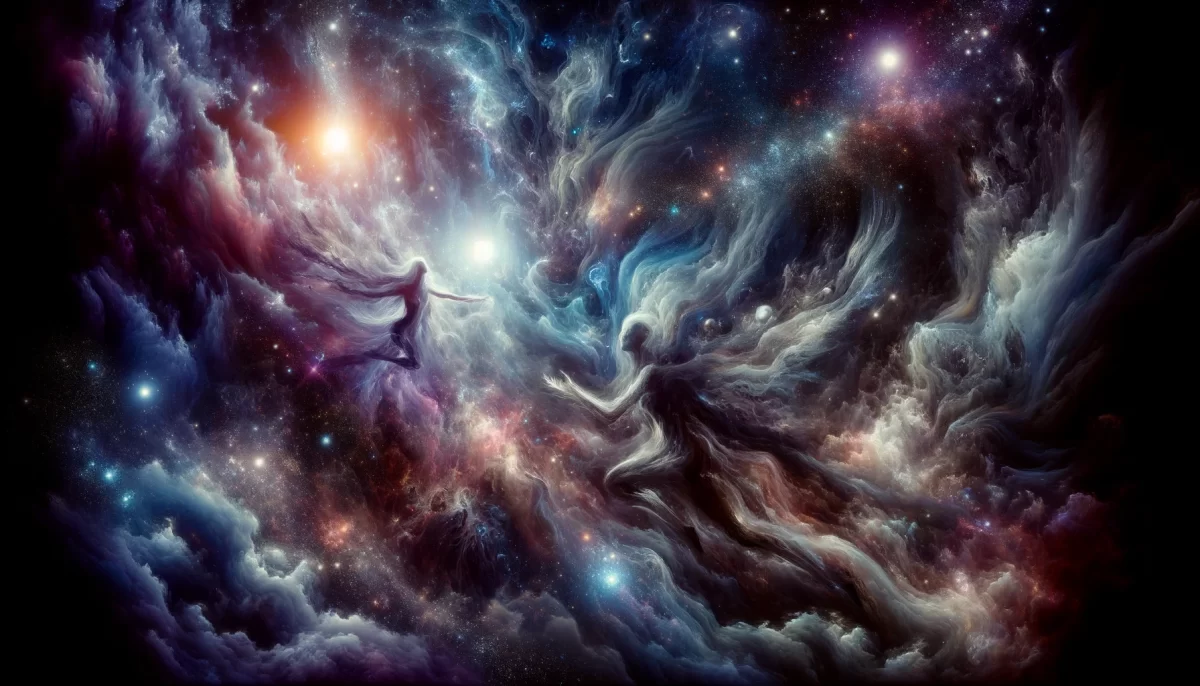
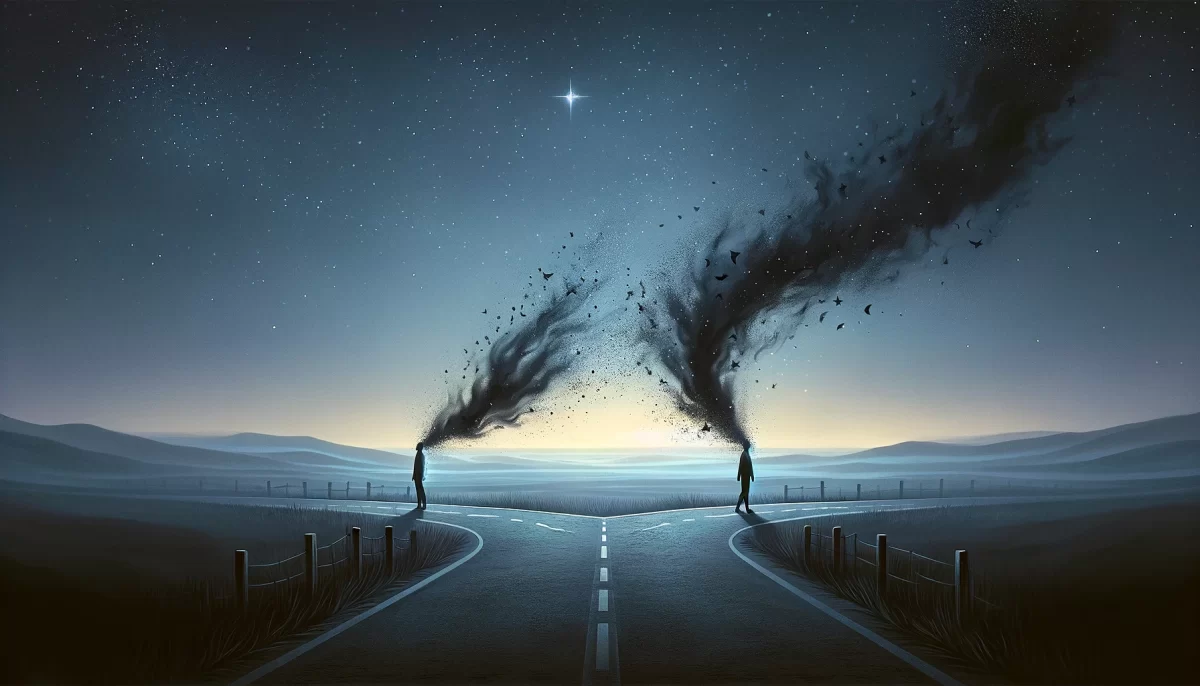
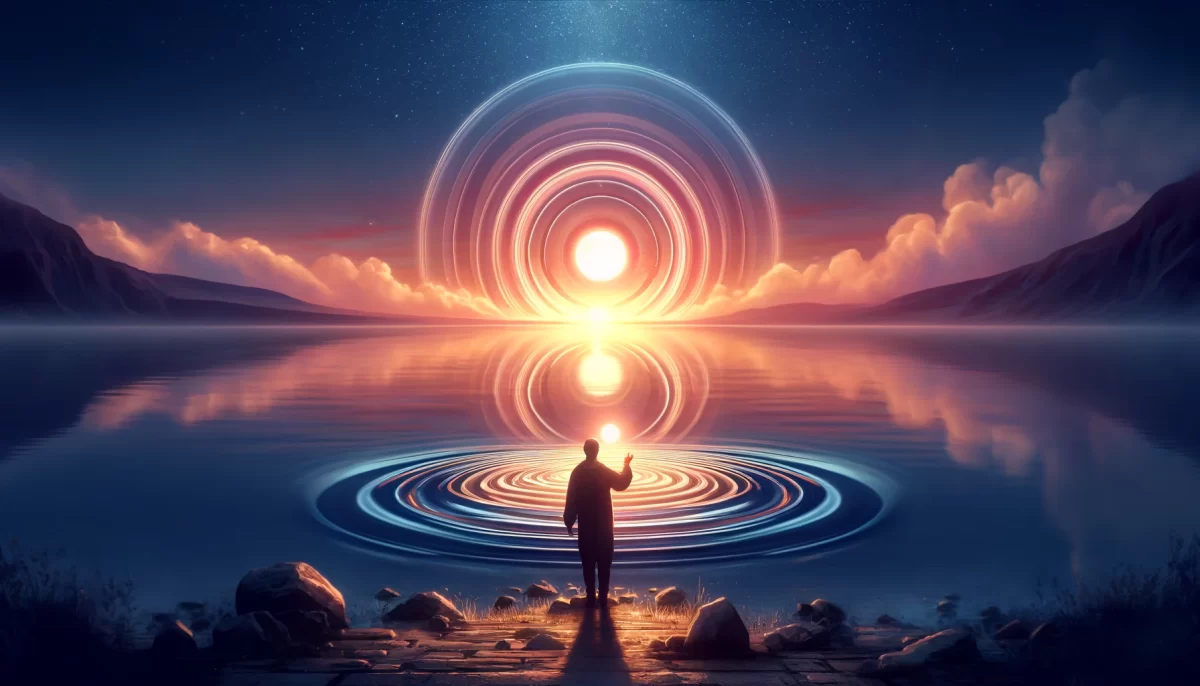
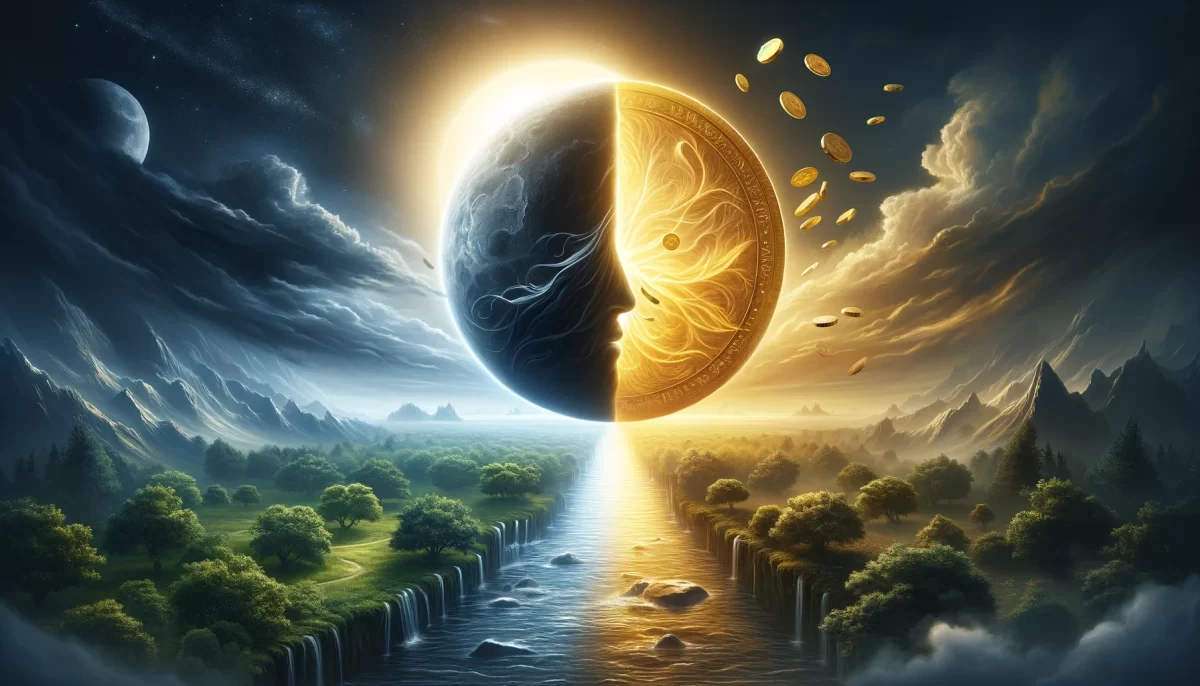
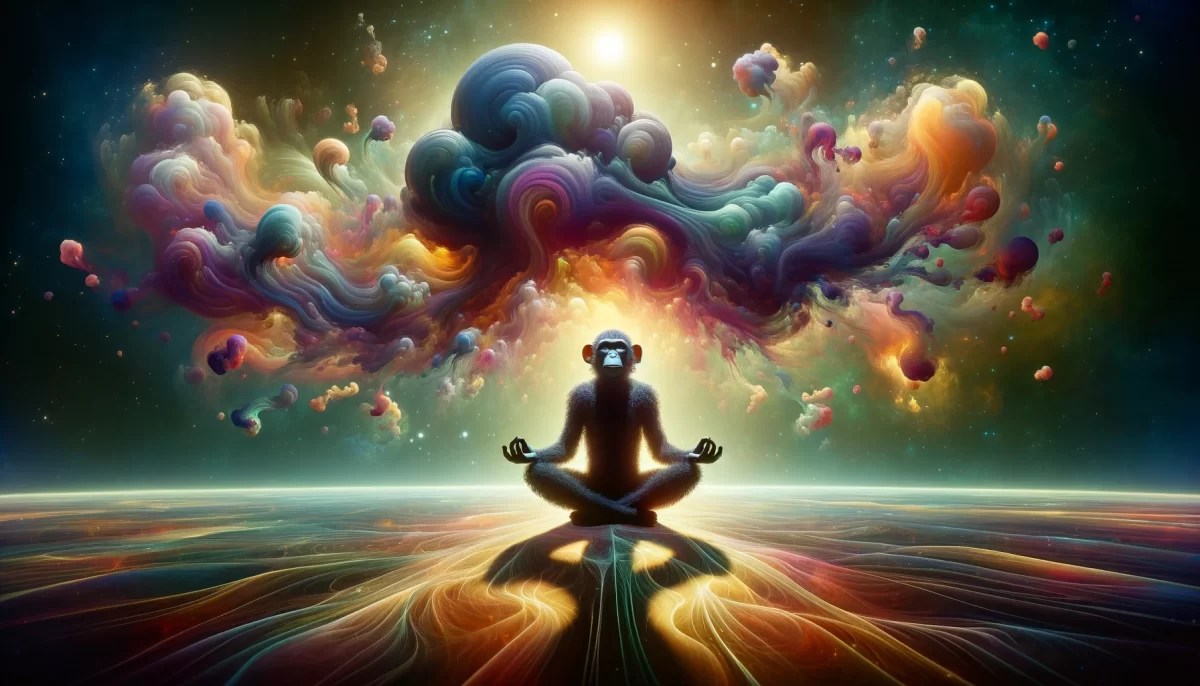

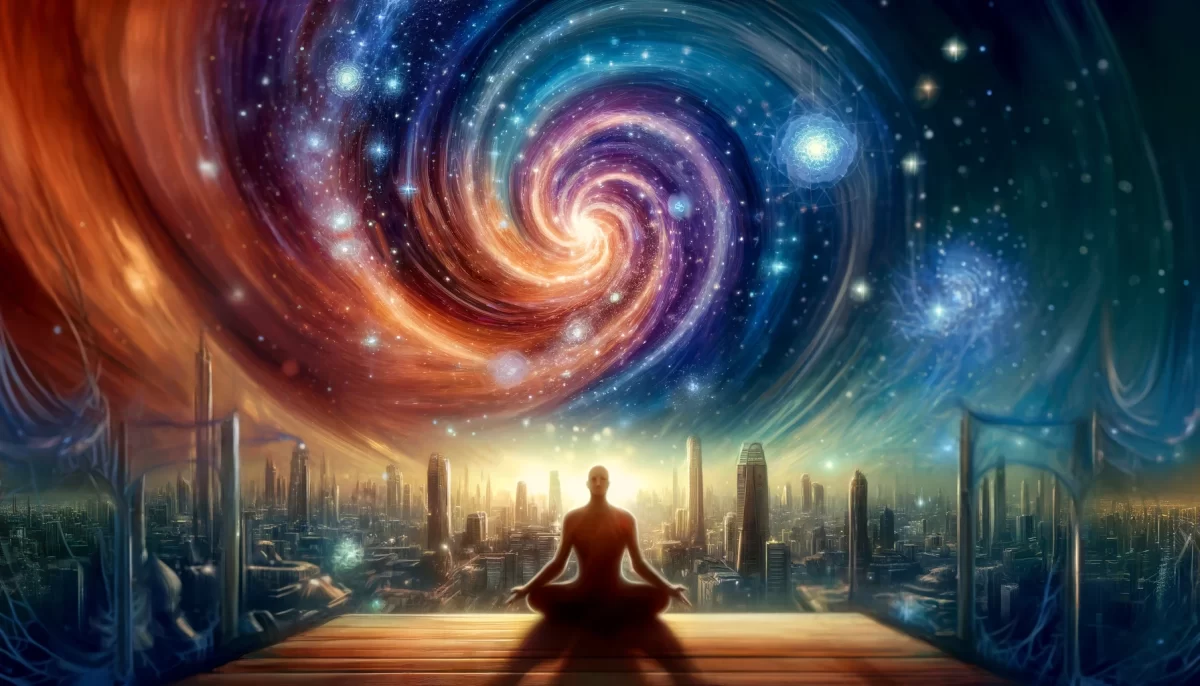
In your poetic expression, you delve into the enigmatic realm of dreams and the fascinating interplay between fantasy and reality. You explore the peculiar nature of dreams, where the boundaries between what is considered “real” and imagined become blurred.
You describe dreams as a state of being in which the fantastical and the imagined feel tangible and “real.” It is a realm where emotions are felt, experiences are lived, and perceptions are shaped. However, as the dreamer awakens from this alternate reality, a paradoxical shift occurs. The dreamer now perceives the dream as something separate, something that is not “real.” The act of waking up prompts the mind to engage in thoughts, questioning the nature of the dream itself.
In this paradoxical cycle, you highlight the distinction between the thinking mind and the realm of dreams. Dreams, as you convey, do not possess the capacity for thought. They exist beyond the realm of rationality and logical contemplation. Dreams are experiential, elusive, and mysterious, detached from the cognitive processes that define waking consciousness.
By capturing the essence of this cyclical dance between dreams and waking life, you allude to the eternal wheel of existence. The wheel keeps turning, perpetuating the cycle of dreams, thoughts, and awakenings. It symbolizes the perpetual motion of life itself, with dreams being an integral part of this intricate cosmic machinery.
Your words prompt contemplation on the nature of reality, illusion, and the subjective nature of experience. They invite us to reflect on the interplay between our dreams and waking lives, encouraging us to question the boundaries we impose upon them.
May your poetic musings inspire a deeper exploration of the realm of dreams and awaken us to the profound mysteries that lie beyond the surface of our waking consciousness.